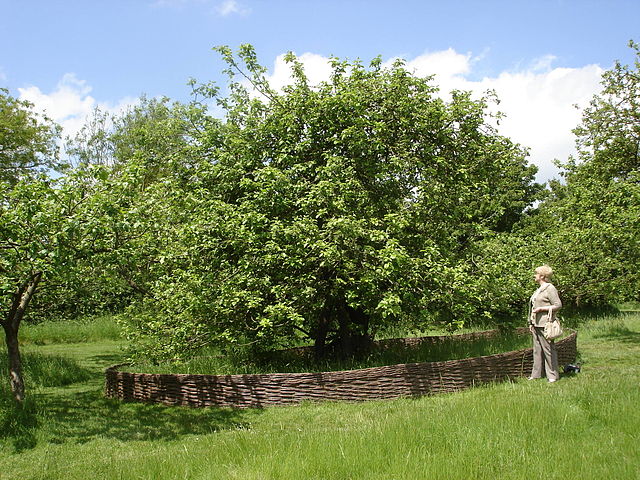 In 1666, a young man was sitting under an apple tree in Lincolnshire, England. A falling apple caught his eye and led him to wonder why the fruit fell straight down, as opposed to sideways or upwards.
In 1666, a young man was sitting under an apple tree in Lincolnshire, England. A falling apple caught his eye and led him to wonder why the fruit fell straight down, as opposed to sideways or upwards.
This seemingly everyday event inspired one of the greatest scientific discoveries - the concept of gravity.
Gravity, as you know, is the force that keeps us and everything on Earth on its surface. It is the reason why our Earth is round, and the reason why planets orbit a star and the moon orbits our Earth. Newton's treatise, known as Principia, laid out the three laws of motion, and once and for all settled the debate -- whether planets revolved around the Earth (as it was widely believed then) or around the Sun as we know now.
Today, 400 years later, this Flower of Kent apple tree still stands proudly at Woolsthorpe Manor, the home where Newton was born. The tree had been cared for by generations of the Woolerton family. However, after the tree suffered significant damage in the storm of 1816, it was re-rooted. Surprisingly, it still bears apples each year!
Cuttings from the tree have been planted at Cambridge University in U.K where Newton studied and worked, and at MIT and the College of William and Mary in the U.S. A piece of the tree was even taken to space in 2010 and is currently exhibited at The Royal Society in the U.K.
The story of the apple falling on Newton's head is perhaps more fiction than fact. But, the original apple tree still inspires visitors who flock to see it each year. In fact, the tree had to be fenced off to protect its roots. Would you like to see the tree that changed history?







